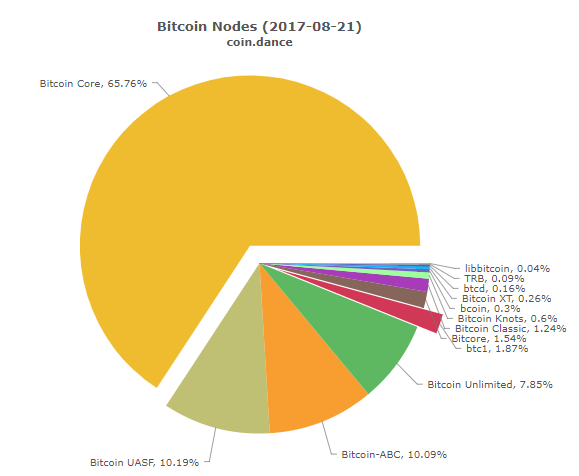Here’s Why BitPay Was Accused of ‘Fraud’ by Bitcoin Core Dev Peter Todd

Since its founding in 2011, BitPay has been a fixture of the cryptocurrency ecosystem. However, this company incurred the wrath of a significant portion of the bitcoin community over the weekend following a blog post that many people labeled as deceptive. In response to the post, one developer promised to fork the BitPay code , prominent figures including Peter Todd accused the company of fraud, and the reference to BitPay as a recommended resource was removed from Bitcoin.org.
BitPay Accused of ‘Fraud’
Here’s what happened:
On August 17, BitPay published a blog post titled “What Bitcore Users Need to Know To Be Ready for Segwit Activation.” According to the post, anyone using BitPay’s Bitcore development platform needs to upgrade to a btc1 node or face “major security risks” following the upcoming Segwit activation. From the post:
Once the new Segwit consensus rules are activated, bitcoin transactions will now contain additional transaction information, and some definitions for important transaction rules will be changing. Nodes which fail to upgrade to support Segwit will face major security risks, including the risk of double-spend transaction fraud.
This paragraph is extremely controversial because Segregated Witness (Segwit) is activated by a soft fork–not a hard fork as BitPay implies. Consequently, Segwit is backward-compatible with non-upgraded nodes. What BitPay is referring to is actually Segwit2x, a separate scaling proposal which must be activated by a hard fork and consequently will not be backward-compatible.
Many people accused BitPay of employing deceptive tactics to convince people to change from Bitcoin Core nodes to Segwit2x nodes. Some even accused them of fraud:
BitPay later added the following paragraph to their post acknowledging they are instructing users to download a Segwit2x node:
ADDENDUM, 8/17/17, 5:20 PM ET: Note that btc1 includes support for the Segwit2x scaling proposal. You may choose to use any full node supporting Segwit, but our instructions follow this version of Bitcoin because over 95% of Bitcoin miners have adopted Segwit2x. If you are not running Segwit2x, your node will be on a dysfunctional minority chain when the base block size increases to 2MB.
Let’s break that down, because it’s not quite as simple as BitPay lays out.
Segwit2x was agreed to by many prominent companies at the New York Agreement, and at any given time, 90-95% of the bitcoin hash rate is signaling support for this proposal.

However, Bitcoin Core developers have universally opposed Segwit2x. BTCDrak slammed the proposal as “technically and ethically appalling,” while Luke Dashjr has said it will fail.
Moreover, support for Segwit2x is mixed among prominent bitcoin companies, and the majority of nodes still run Bitcoin Core.

Finally, although most of the hash rate is signaling for Segwit2x, that does not necessarily mean that every miner supports the proposal. A great deal of the hash rate is centralized in mining pools which signal for Segwit2x, but the individual miners using those pools may or may not support the proposal.
Since Core opposes this proposal, the bitcoin blockchain will likely incur another chain split in November when Segwit2x is slated to deploy. At that point, there will be at least three prominent coins claiming to be bitcoin: the main (or legacy) bitcoin, bitcoin cash, and Segwit2x’s version of bitcoin.
Here’s why that matters.
When bitcoin cash split away from bitcoin on August 1, they implemented replay protection to prevent an attacker from broadcasting a transaction on multiple chains. Bitcoin cash purports to be the fulfillment of Satoshi Nakamoto’s original vision for bitcoin, but it acknowledges it is a separate coin from the main blockchain.
Segwit2x proponents, on the other hand, claim that the Segwit2x coin will be bitcoin, while the Core blockchain will be, in BitPay’s words, a “dysfunctional minority chain.”
Core supporters, however, claim that the Segwit2x coin will be an altcoin since it is forking away from the original blockchain.
If the Segwit2x hard fork does not include replay protection, the original/legacy blockchain would have to institute a hard fork of its own to protect itself against replay attacks. Since both chains consider themselves to be “the real bitcoin,” neither wants to be the one to add replay protection.
Olivier Janssens, a bitcoin cash proponent and longtime Core critic, urged Segwit2x to not add replay protection for this reason:
https://twitter.com/olivierjanss/status/898585114103476224
https://twitter.com/olivierjanss/status/899325676523749376
However, Segwit2x developer Jeff Garzik said today that replay protection is “an open issue with several possible [solutions].”
What is Bitcoin?
Segwit2x may boast nearly all of the current hash power, but the bitcoin community remains far from consensus on this controversial scaling proposal. As November approaches, it appears increasingly likely bitcoin will incur another chain split. If this does occur, it remains to be seen whether both coins will coexist–as has been the case thus far with bitcoin cash–or whether one version will immediately prove dominant. Ultimately, the coming months will provide us with a testing ground for the question: “What is bitcoin?”
Featured image from Shutterstock.